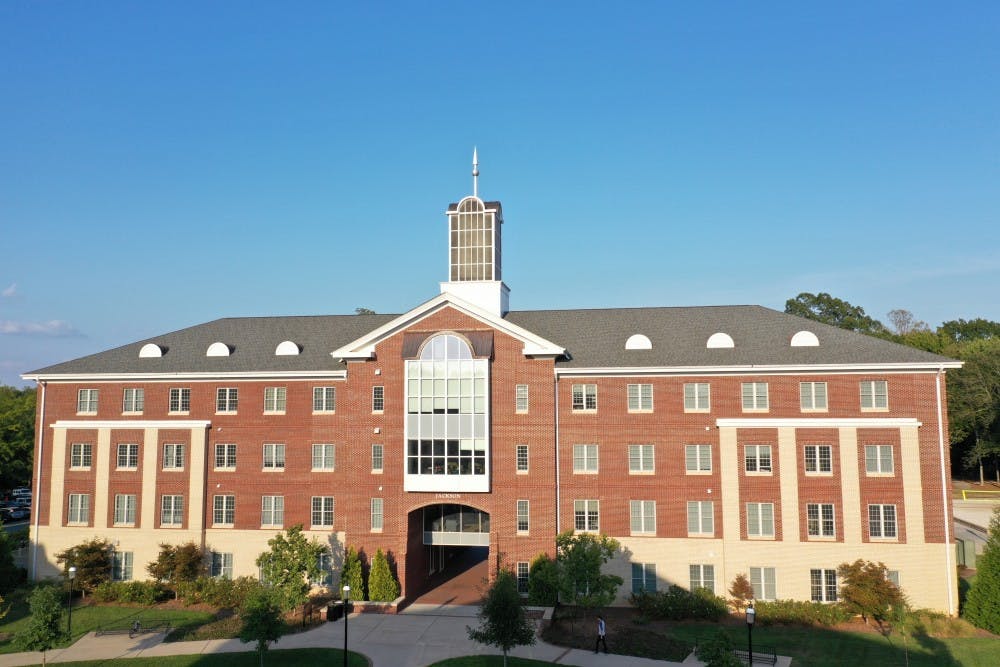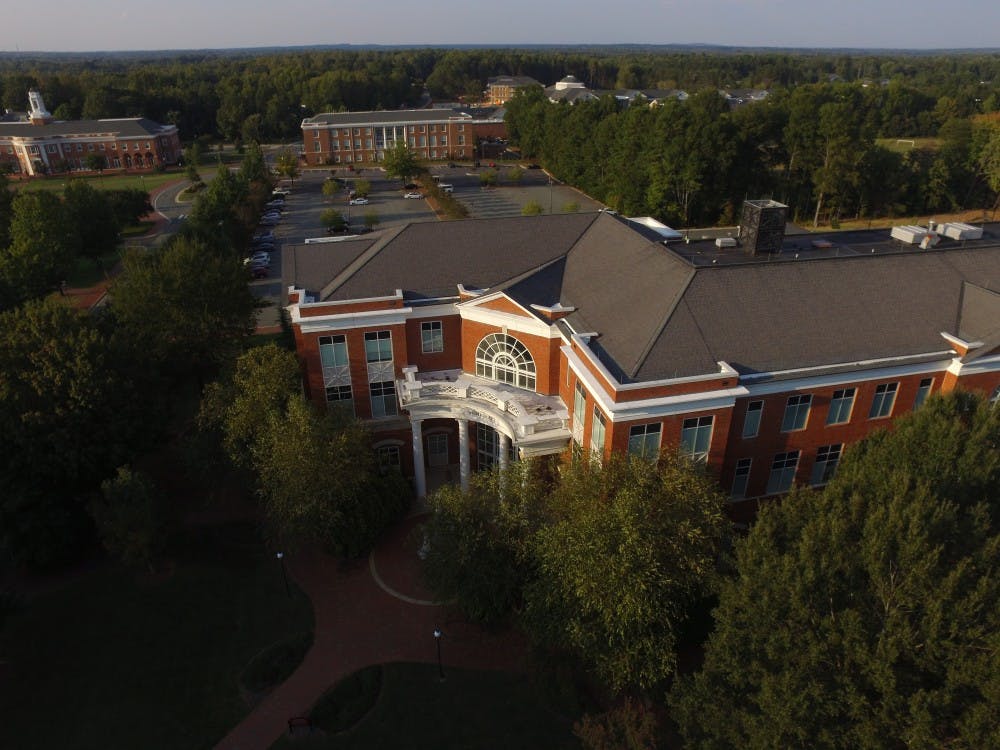After a decade of capital projects, curriculum changes, enrollment growth and student-centered initiatives, Elon University’s 2010-2020 strategic plan is 96.9% complete, according to the plan’s website. In the final months of “The Elon Commitment,” the university is in the process of finalizing the 2020-2030 strategic plan, which has yet to be named.
According to Vice President for Strategic Initiatives Jeff Stein, who is also co-chair of the Strategic Planning Committee, the plan should be approved by the Board of Trustees by mid-December.
The Student Government Association will host a forum in The Moseley Center on Thursday, Oct. 3, at 7:30 p.m. to receive input from the student body on the plan. Members of the Strategic Planning Committee are currently reaching out to student organizations for more feedback.
The 2020-2030 strategic plan’s creation was a community-wide effort. The 47-member strategic planning committee — which includes students, alumni, professors, trustees, President Connie Book, faculty and staff — received additional input through surveys and open listening sessions.
Stein said hearing the community’s hopes for the future has been a rewarding experience.
“The Elon family has articulated a bold vision of Elon being even better at being Elon,” Stein said. “The vision is, let’s build a better Elon, not try to be someone else.”
The Elon Commitment included eight themes, but the 2020-2030 strategic plan has just four: rise, learn, thrive and connect. The goals outlined in each of these themes will dictate the university’s actions and initiatives for the next 10 years.
“Any goal that we put in the strategic plan we’re going to make sure that we can model and we can accomplish, but we’re going to make sure it stretches us,” Stein said.
One of the first goals outlined under the “rise” theme is the university’s intention to more than double the endowment to $625 million, with more than 80% dedicated to funding student scholarships.
Gerald Whittington, the former senior vice president for business, finance, and technology, said the influx of funds would come from donor support.
According to Stein, offering affordable tuition rates may help the university stay competitive during the 2025 college enrollment downturn.
“One thing that all colleges and universities are thinking about is there’s going to be even more competition, and that means that colleges and universities have to be even better,” Stein said. “This is what President Lambert used to call a ‘long-play,’ but we believe that if we work hard enough and in the right ways, we can double the endowment.”
Current and incoming students will see new science and technology courses offered in the coming years, as well as the addition of a STEM quad. The “learn” theme of the 2020-2030 strategic plan emphasizes the importance of STEM education for all students.
In addition to establishing a nursing program and a “leading school of engineering,” Elon will offer short courses, pop-up learning opportunities and certificate programs on digital literacy and data analysis across all disciplines.
Shefali Christopher, assistant professor of physical therapy education and strategic planning committee member, believes that offering more STEM opportunities is key to the university’s development.

“More engineering options, more pathway options like the 3+1 that would allow students to come sooner to physical therapy school, things like that are really good for the value and growth of Elon and having a place as a national university,” Christopher said.
According to Stein, the push for more STEM programs is partially due to feedback from alumni who wished they would have had more experience with data before graduation.
“STEM is exciting. It’s bold and it’s something that’s been in the works for a number of years,” Stein said. “We know that we have to deepen our efforts there, both for students to find jobs as well as to provide all students with those abilities.”
The university also plans to institute a new four-year mentoring model in which students will build a network of advisors instead of having only one.
Tim Peeples, senior associate provost for faculty affairs and strategic planning committee member, said the new mentoring model will help students gain real-world networking skills.
“Relying on one person to do all things for you is really not a wise way to go about mentor relationships. So in reality, most of us have a number of mentors who serve different roles,” Peeples said. “One of the things we’re going to be focusing on is helping students develop a broad constellation, or set, of mentors that help them in all facets.”
One of the goals outlined in the “learn” theme is ensuring even greater access to internships and study abroad opportunities. In consideration of the relationship between international travel and climate change, the university hopes to become carbon neutral by 2037. Stein said there is currently no plan in place for how the university will accomplish this goal.
“This is a strategic plan that throws out ideas, but implementation is later,” Stein said.
Much of the “thrive” theme is dedicated to promoting well-being across campus, starting with the students.
A renovation of the Koury Center will combine recreation, mental health, wellness and social centers into one space. According to Christopher, the university hopes to give students the resources and resilience they need to get through school.
“You hear all the time that students have increased pressures to perform in universities, to keep up with scholarships, and we want students to be healthy so they perform well,” Christopher said. “That’s probably one of the things that I love most about the plan: we are investing in our own students, and we are helping them be the best that they can be.”
The plan describes an Elon where students, faculty and staff “experience a deep sense of support and belonging.”
Leigh-Anne Royster, director of the Center for Equity and Inclusive Excellence, said while The Elon Commitment was about building the capacity for diversity and inclusion, the 2020-2030 strategic plan is about making further progress.
“There’s a lot of language in the new strategic plan about wellness, wholeness and equity,” Royster said. “We can really think in terms of how we’re going to think about diversity and inclusion moving forward, and we’re going to have a lot of opportunities for deepening and developing what we do at this point.”
The plan’s final theme, “connect,” promotes greater engagement between the university and Guilford and Alamance counties. According to Stein, the surrounding areas have identified education, health and economic development as their priorities, and the university intends to help them meet those goals.
“The plan suggests that we believe we can do better in terms of our connection with those communities,” Stein said.
According to Stein, the strategic planning committee worked hard to ensure the new strategic plan reflects the needs of everyone at Elon.
“We have a history of identifying stretch goals together and working towards them,” Stein said. “But I think a liberal arts university that provides the world’s best engaged learning and mentoring leads to graduates who change the world. That’s the goal.”


